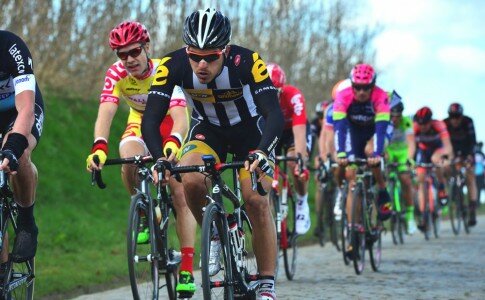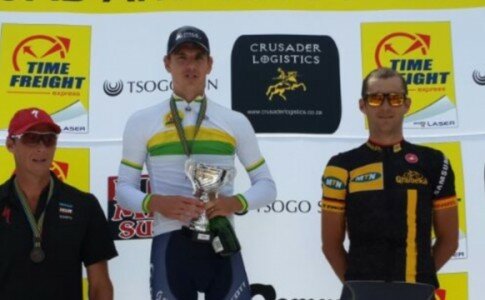It’s hot, hot, hot at the Tour de France this week. Clear sunny skies and afternoon temperatures of up to 35°C with +50 percent humidity are predicted. This peachy summer weather may sound blissful if you’re aiming to perfect your summer glow while catching a glimpse of the passing peloton. If however, you’re a TDF rider the heat represents a real threat to both your performance and health.
The human body performs best at an internal temperature of around 37°C. When we exercise we expend energy and produce heat. To dissipate the heat we sweat (evaporative cooling), divert blood from our internal organs to our skin and superficial muscles (convection and conductive cooling) and increase the rate of our blood circulation. If despite these responses our body temperature continues to rise, the brain directs us to reduce exercise intensity (i.e. heat production) in an attempt to prevent overheating and potentially life threatening heat illness (hyperthermia, heat exhaustion, heat stroke).
At Team MTN-Qhubeka pb Samsung our riders are supported by a team of sports scientists and medical doctors who proactively manage in-race environmental challenges with the goal of optimizing our riders performance and preventing illness.
Here are ten approaches that we use to beat the heat:
1. Pre-warned is pre-pared. As meteorologists-in-training we keep a close eye on the weather channels, and prepare well in advance
2. Heat acclimation is a standard part of our athlete training and preparation strategy in the weeks leading into “hot” tours.
3. Wear Sunscreen. SolRx [Link] is our sunscreen of choice; it has a high SPF, is long-lasting, doesn’t sweat off, and is easy to apply. Spray Dry SPF 50 for the body and Dry Zinc SPF44 for the face.
4. Lightweight, breathable kit with UPF protection, like the Castelli “Climbers Jersey” [Link] we use.
5. Cool our riders with ArcticHeat ice vests and high volume fans as part of their standard warm-up protocols for time trials.
6. Cool drinks pre-, during and post race. Our soigneurs deliver cool to frozen melt-as-you-ride bidons of High5 EnergySource, slushies, iced coffees and even ice lollies during the race.
7. Ice stockings. Yes, that’s what our soigneurs do with the vast quantities of nylon pantyhose that they purchase en route. They cut them up, knot one end, fill them with ice cubes, and knot to seal. During the race our riders slip them under their shirts, and enjoy the melt. During the extreme heat of the 2014 Vuelta, each rider received up to 15 ice stockings per stage.
8. Monitoring hydration status. Each day our riders are weighed three times (pre-breakfast, pre- and post- race) and the specific gravity of their morning urine is measured by our team doctor. Where significant fluid losses are noted, we focus on aggressive rehydration strategies.
9. Post race cooling through air conditioning (team bus, riders hotel rooms), ice baths, cool showers.
10. Celebrate our African origins. Our African athletes appear to be better adapted for hot conditions. They have a low % body fat, and relatively high body surface to body weight ratio which offers heat dissipation advantages.













































